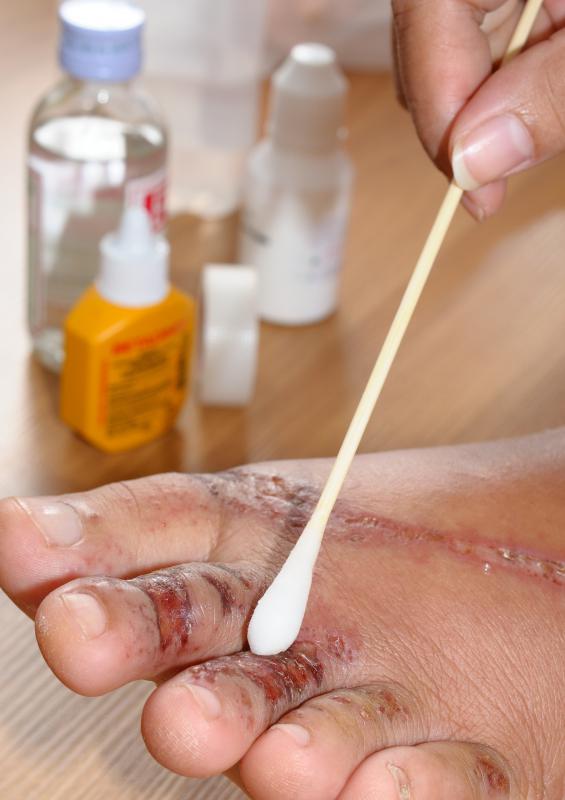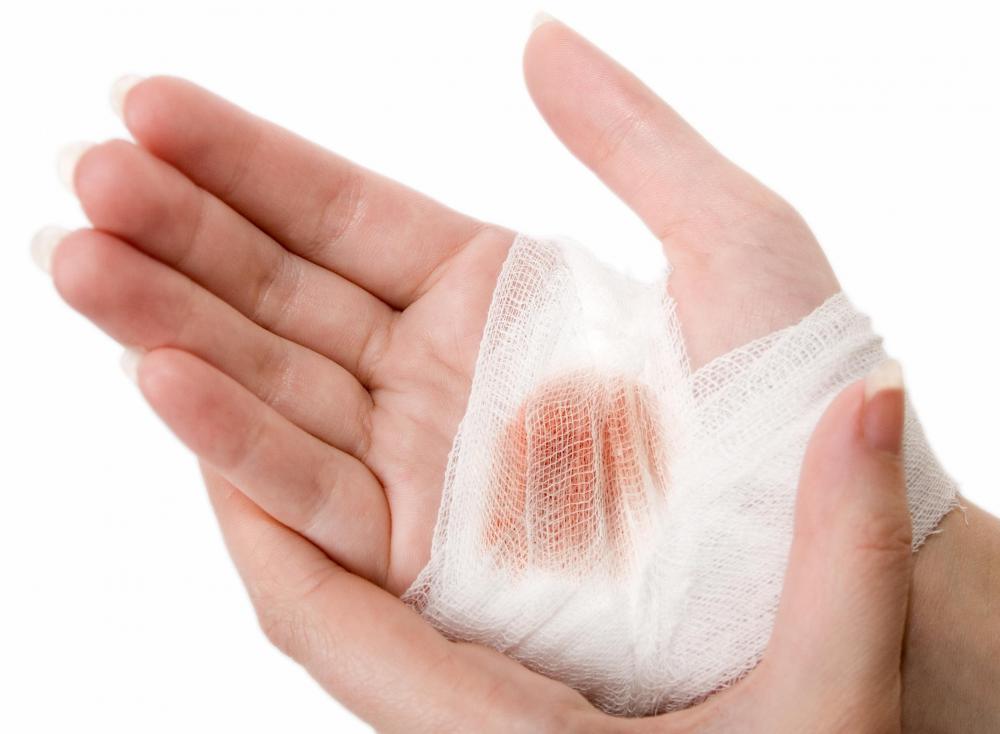At WiseGEEK, we're committed to delivering accurate, trustworthy information. Our expert-authored content is rigorously fact-checked and sourced from credible authorities. Discover how we uphold the highest standards in providing you with reliable knowledge.
What are the Different Types of Wound Products?
Some types of wound products available include wrapping or dressings, antibiotics, cleaning agents, and stitching. The products which will need to be used in any given situation will depend on the type of wound, its severity, and how the injury occurred. In some cases, several wound products may need to be used at one time, while in other cases, the wound may require little or no treatment.
Wrappings and dressing are items, usually made from some type of fabric or cloth, which can be used to cover the wound in order to stop bleeding and to prevent dirt and other contaminants from entering the wound. Use of these wound products are generally a good idea for any open wounds because these are most prone to infections. Commercial bandage products are also available for very minor injuries. They are generally made from sticky material on each side with a fabric area in the center to cover the wound.

Antibiotics are wound products which should be used as soon as possible after an injury occurs. They come in many forms, including pills, ointments, and liquids. Application after the wound has occurred helps kill any bacteria at the site, thus reducing the chances of infection. Treated wounds should be promptly covered with bandages or dressings to prevent re-infection, and additional antibiotics may be administered as the wound heals.

Certain cleaning agents can also double as antibiotics. Rubbing alcohol, hydrogen peroxide, and some commercial products all can be used to clean the wound. They also kill germs and bacteria in the area and can be followed up with an antibacterial ointment to help provide prolonged protection.
Stitching supplies are wound products which must be administered by a doctor or nurse. Wounds can be sewn shut using a needle and specialized medical thread. Without stitches, many open wounds would likely re-open if any pressure was applied during the initial stages of healing. The stitching helps keep the area closed while the tissues heal themselves. Thread or sutures will either be removed upon healing or they may dissolve or fall out with time.
Any large or severe wounds should be treated by licensed medical personnel. Additionally, if a wound is caused by a questionable object, testing and treatment may be needed to prevent serious side effects. For example, dirty needles and rusty nails may cause serious infections such as tetanus or human immunodeficiency viral (HIV) infections. Both of these must be promptly detected and treated.
AS FEATURED ON:
AS FEATURED ON:












Discuss this Article
Post your comments